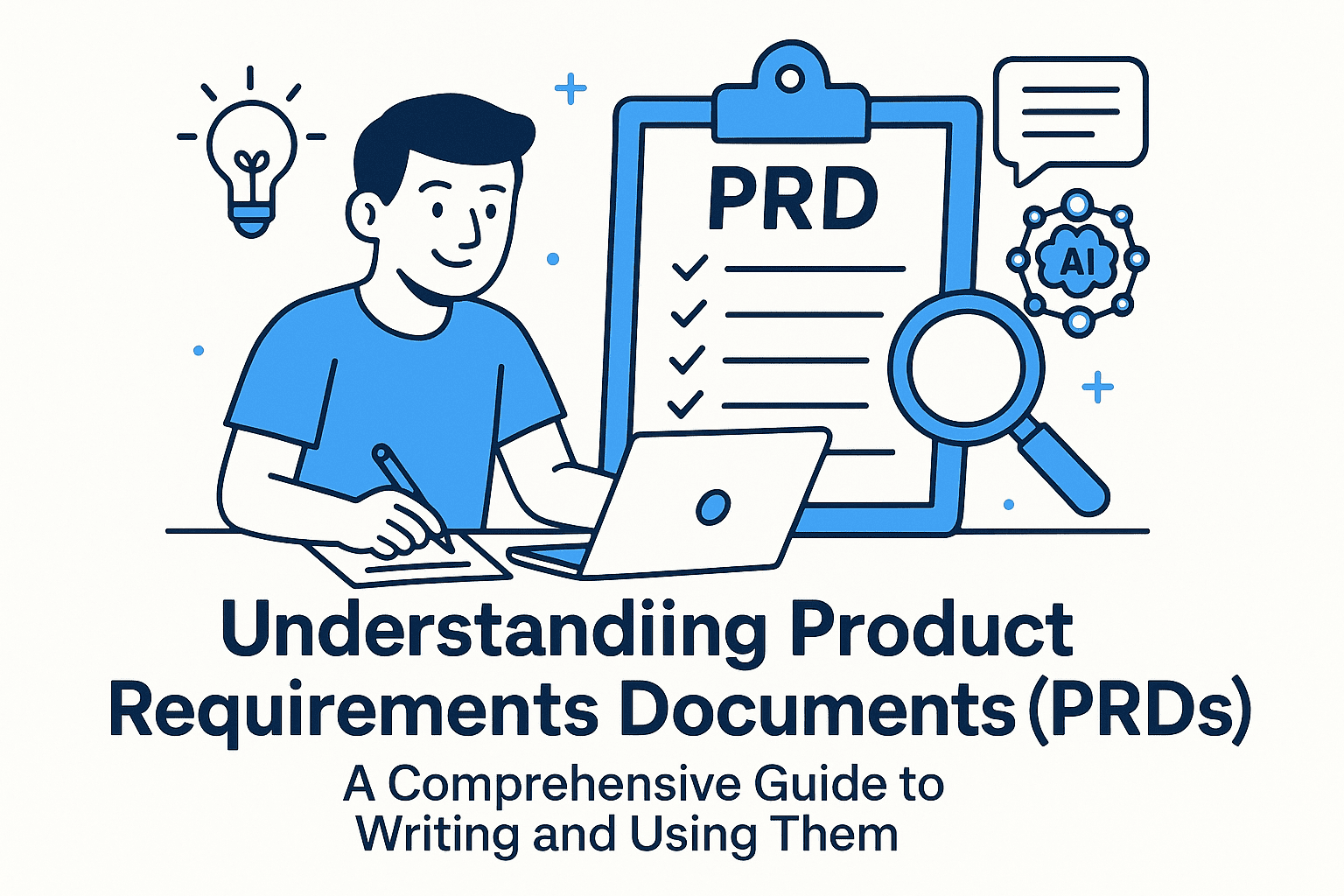Your internal engineering team is talented, dedicated, and stretched impossibly thin. Sound familiar? As an engineering leader, you're facing a reality that keeps you up at night: critical projects sitting in backlog, specialized technical challenges your team hasn't tackled before, and executive pressure to deliver faster. The question isn't whether your team is capable, it's whether trying to build everything in-house is the right strategic decision. Knowing when to hire a contractor can transform bottlenecks into momentum without compromising your team's core mission.
The most successful engineering organizations recognize a fundamental truth: internal teams should focus on core competencies and strategic initiatives while contractors fill specific gaps. This isn't about replacing your engineers, it's about empowering them to do their best work by removing constraints that slow everyone down.
The Capacity Constraint Reality: When Your Backlog Becomes a Bottleneck
Every engineering organization operates with finite resources facing infinite demands. Your product roadmap extends 18 months while your sprint capacity barely covers the next quarter. This capacity gap isn't a failure of planning, it's the mathematical reality of modern software development.
Recognizing Critical Capacity Signals
Your backlog reveals critical insights about when external help becomes necessary:
- Priority paralysis: High-value projects remain unstarted for multiple quarters because your team lacks bandwidth
- Context switching overhead: Engineers juggle so many responsibilities that productivity plummets across all initiatives
- Technical debt accumulation: Maintenance and refactoring get deferred indefinitely, creating future liabilities
- Innovation starvation: Experimental projects and R&D efforts never receive attention despite strategic importance
When capacity constraints force you to choose between maintaining existing systems and building new capabilities, contractors provide a surgical solution. Rather than hiring full-time employees for temporary capacity needs, bringing in specialized contractors allows you to maintain momentum on strategic initiatives without permanent overhead.
The True Cost of Internal-Only Development
Consider the hidden costs of refusing to hire a contractor when capacity is constrained. A three-month delay on a revenue-generating feature doesn't just postpone income, it compounds into missed market opportunities, competitive disadvantages, and team morale issues. Your talented engineers become frustrated watching important work languish while they're buried in operational tasks.
The decision framework is straightforward: if a project generates more value than the contractor cost and your internal team can't address it within an acceptable timeframe, external expertise makes financial sense. This is resource optimization at its most practical.
Specialized Skills: Admitting What You Don't Know Is Strategic Leadership
Not every technical challenge requires permanent expertise on your team. Machine learning pipelines, blockchain implementation, advanced security audits, or legacy system migrations might occur once or twice in your product's lifecycle. Building internal expertise for these specialized skills creates unnecessary overhead.
When Specialized Knowledge Justifies Contractors
Certain technical domains demand deep, specialized knowledge that takes years to develop:
- Emerging technologies: ML/AI implementation, blockchain, quantum computing applications where the talent market is thin and expensive
- Security and compliance: Penetration testing, SOC 2 audits, GDPR compliance implementations requiring certified specialists
- Legacy integrations: Mainframe connections, proprietary system interfaces, or aging codebases written in obsolete languages
- Performance optimization: Database tuning, infrastructure scaling, or algorithm optimization requiring niche expertise
- Platform-specific development: iOS/Android specialists, embedded systems engineers, or specialized framework experts
The strategic question isn't "Can my team learn this?", they probably can. The real question is "Should they?" Learning specialized skills diverts focus from core competencies and often results in adequate rather than excellent outcomes.
The Knowledge Transfer Advantage
Contrary to common fears, contractors with specialized skills often accelerate your team's capabilities. When you hire a contractor for a specific technical challenge, structure the engagement to include documentation, knowledge sharing sessions, and code reviews that transfer expertise to your internal engineers.
[IMAGE: Decision matrix comparing build vs. buy for specialized skills]
This approach gives you the best of both worlds: expert-level implementation of specialized work plus educational value for your team. Your engineers gain exposure to new technologies and methodologies without the months of trial-and-error learning.
Time-to-Market Pressures: Speed as Competitive Advantage
In technology markets, timing often matters more than perfection. Being first to market with an adequate solution frequently beats being last with an optimal one. When competitive pressure or strategic opportunities demand rapid execution, contractors provide acceleration without long-term commitment.
Scenarios Where Speed Justifies External Help
Time-critical situations that warrant contractor engagement include:
- Market window opportunities: Seasonal demands, regulatory changes, or emerging market segments with limited time sensitivity
- Competitive responses: Rapid feature parity when competitors launch threatening capabilities
- Pilot projects: Testing market hypotheses or new business models with minimum time investment
- Technical spikes: Proof-of-concept work that informs strategic decisions requiring quick turnaround
Your internal team's velocity remains relatively constant, they can only move so fast sustainably. When business needs exceed that velocity, contractors provide the variable capacity to match opportunity timelines.
Balancing Speed and Quality
The speed advantage of contractors doesn't mean sacrificing quality. Experienced contractors deliver faster precisely because they've solved similar problems before. They bring patterns, frameworks, and proven approaches that avoid the learning curves your team would face.
However, speed-driven contractor engagement requires clear success criteria, well-defined scope, and robust handoff processes. The time you save in development shouldn't be lost in integration chaos or documentation gaps.
[INTERNAL LINK: project scoping best practices]
The Economics: Contractors vs. Full-Time Hiring
Engineering leaders must be stewards of budget resources. The hire-a-contractor-versus-full-time-employee decision involves more complexity than comparing hourly rates to salaries.
True Cost Comparison Framework
Full-time employee costs extend far beyond base salary:
- Total compensation: Salary, equity, benefits, bonuses typically add 1.25-1.4x multiplier to base pay
- Overhead allocation: HR support, office space, equipment, software licenses, training budget
- Ramp time: 3-6 months before new hires reach full productivity
- Long-term commitment: Difficulty adjusting team size when project needs change
- Opportunity cost: Time spent recruiting, interviewing, and onboarding
Contractors present a different cost structure:
- Higher effective hourly rate: But only for actual work hours on specific projects
- Immediate productivity: Experienced contractors contribute from day one
- Zero overhead: No benefits, equipment, or long-term commitments
- Flexible scaling: Adjust contractor hours or end engagement when needs change
- Reduced management burden: Senior contractors require minimal oversight
The crossover point typically occurs around 6-9 months of full-time equivalent work. Projects shorter than this often make more financial sense with contractors. Ongoing needs exceeding this duration usually justify full-time hiring.
Strategic Budgeting With Mixed Teams
The most sophisticated engineering organizations don't choose between contractors and full-time employees, they strategically deploy both. Maintaining a core team of full-time engineers supplemented by contractors for specialized or time-bound work optimizes both cost and capability.
This approach requires mature capacity planning and project portfolio management, but it transforms your engineering organization from a fixed cost center into a variable capacity asset.
Knowledge Transfer and Documentation: Ensuring Value Persists
The legitimate concern about contractors is knowledge walking out the door when engagements end. However, this risk is manageable and often overestimated compared to similar risks with full-time employees who change jobs every 2-3 years.
Building Knowledge Transfer Into Contractor Engagements
Successful contractor relationships include structured knowledge management:
- Documentation requirements: Detailed technical documentation, architecture decision records, and runbooks as deliverables
- Code review participation: Internal engineers review contractor code, ensuring understanding and quality
- Pair programming sessions: Contractors work alongside internal engineers on complex components
- Knowledge sharing meetings: Regular demos, technical presentations, and Q&A sessions
- Recorded walkthroughs: Video documentation of system components and operational procedures
The key is making knowledge transfer an explicit requirement, not an afterthought. Build it into statements of work, allocate time for it in project plans, and measure contractor success partly on how well they enable your team's future maintenance.
The Internal Team Advantage of Contractor Projects
Counterintuitively, well-structured contractor engagements often improve internal team knowledge. Your engineers gain exposure to new approaches, technologies, and problem-solving methodologies they might not encounter otherwise. The contractor's specialized expertise becomes a learning opportunity that elevates your entire team's capabilities.
When NOT to Hire a Contractor: Building Trust Through Honest Assessment
Understanding when contractors are the wrong choice is as important as knowing when they're beneficial. Transparency about these scenarios builds credibility and helps you make better decisions.
Situations Where Internal Development Is Superior
Avoid contractors for:
- Core product features: Anything central to your competitive differentiation should be built and owned internally
- Long-term platform architecture: Foundational systems requiring deep institutional knowledge and ongoing evolution
- Culture-critical initiatives: Projects that embody your engineering values, practices, or technical vision
- Highly ambiguous work: Exploratory projects requiring extensive domain knowledge and iterative discovery
- Team capability development: Strategic areas where building internal expertise provides lasting competitive advantage
The decision principle is straightforward: if work requires deep organizational context, connects to long-term strategic capabilities, or defines your competitive moat, keep it internal. Contractors excel at well-defined problems with clear success criteria, not ambiguous exploration requiring institutional knowledge.
The Team Morale Consideration
Your internal engineers need to see contractors as force multipliers, not threats. This requires transparent communication about why you hire a contractor for specific projects. Frame contractor engagements as removing blockers and creating capacity for your team to focus on high-impact work.
When internal engineers see contractors handling the specialized security audit so they can focus on building innovative features, resentment transforms into appreciation. The narrative matters: "We're bringing in specialized help so you can do what you do best" lands very differently than "We're hiring contractors because you're not getting enough done."
[INTERNAL LINK: building high-performing engineering teams]
Creating a Decision Framework: Making the Hire-a-Contractor Choice Systematic
Rather than making ad-hoc decisions about when to hire contractors, develop a systematic framework that brings consistency and strategic thinking to these choices.
The Contractor Decision Matrix
Evaluate potential contractor engagements across these dimensions:
Project Characteristics:
- Duration: How long will this work take? (Under 6 months favors contractors)
- Specialization: Does this require niche expertise? (High specialization favors contractors)
- Strategic importance: How core is this to competitive advantage? (Core work favors internal)
- Urgency: How critical is timeline? (High urgency favors contractors)
- Scope clarity: How well-defined is the work? (Clear scope favors contractors)
Team Considerations:
- Current capacity: What's the backlog depth? (High backlog favors contractors)
- Skill gaps: Does the team have required expertise? (Significant gaps favor contractors)
- Learning value: Should the team develop this capability? (Strategic skills favor internal)
- Morale impact: How will this affect team dynamics? (Requires careful communication)
Economic Factors:
- Budget availability: What's the cost comparison? (Short-term or specialized favors contractors)
- Time-to-market value: What's the business impact of faster delivery? (High value favors contractors)
- Opportunity cost: What else could the team build? (High-value alternatives favor contractors)
Score each dimension and use the aggregate to guide your decision. This framework prevents emotional or reactive choices, replacing them with strategic evaluation.
[IMAGE: Decision tree for contractor vs. internal development]
Building Effective Contractor Relationships: Getting Value From External Expertise
Deciding to hire a contractor is just the beginning. Successful contractor engagements require intentional relationship management and clear operational practices.
Setting Up Contractors for Success
High-performing contractor relationships share common characteristics:
- Crystal-clear scope: Document specific deliverables, success criteria, and boundaries
- Access and integration: Provide tools, code access, documentation, and communication channels from day one
- Single point of contact: Assign one internal engineer as the primary liaison to prevent confusion
- Regular check-ins: Scheduled syncs to review progress, address blockers, and adjust approach
- Feedback loops: Continuous review cycles catching issues early rather than at project end
Contractors can only perform as well as your onboarding and integration processes allow. The same organizational dysfunction that hampers internal teams will cripple contractor effectiveness. If your internal processes are chaotic, fix those first before bringing in external help.
Measuring Contractor Success
Define success metrics before engagement begins:
- Delivery metrics: On-time completion, scope adherence, quality standards met
- Integration metrics: Code review feedback, test coverage, documentation completeness
- Knowledge transfer metrics: Internal team understanding, documentation quality, training sessions completed
- Business metrics: Features launched, performance improvements, security issues resolved
These metrics serve two purposes: they hold contractors accountable and help you evaluate whether future contractor engagements make sense for similar work.
Conclusion: Contractors as Strategic Enablers, Not Replacements
The decision to hire a contractor should never be about replacing your internal team, it's about empowering them to do their best work. Your engineering organization becomes more capable, not less, when you strategically deploy external expertise for specialized skills, capacity constraints, or time-critical projects.
Engineering leadership means making hard choices about resource allocation. You can't build everything, be experts in every domain, or always move as fast as business demands. Contractors provide surgical precision for specific challenges while your internal team maintains focus on core competencies and strategic initiatives that define your competitive advantage.
The most successful CTOs and engineering managers build hybrid organizations that combine the institutional knowledge and strategic alignment of internal teams with the specialized expertise and flexible capacity of contractors. This isn't compromise, it's optimization.
Start by evaluating your current backlog through the decision framework presented here. Identify projects that score high on the contractor-appropriate dimensions: specialized skills, clear scope, time sensitivity, or capacity constraints. These are your candidates for external expertise.
Your internal team can't build everything. They shouldn't have to. Strategic use of contractors doesn't diminish your engineers, it amplifies them, removing obstacles and creating space for the high-impact work only they can do.
[EXTERNAL LINK: engineering leadership best practices]
Frequently Asked Questions
How do I prevent contractors from taking over core product work?
Establish clear boundaries in your contractor policy. Core product features, platform architecture, and anything central to your competitive differentiation should explicitly remain with internal teams. Include these boundaries in statements of work and regularly review contractor projects to ensure they haven't drifted into strategic territory. The key is being intentional about what constitutes "core" versus "peripheral" work before engaging contractors.
What's the ideal ratio of contractors to full-time engineers?
There's no universal ratio, but healthy engineering organizations typically maintain contractors at 10-25% of their total engineering capacity. This provides flexibility without creating dependency. If contractors exceed 30-40% of your team, you likely have a hiring problem or unclear strategic focus. The ratio should flex based on project portfolio, higher during specialized initiatives, lower during strategic platform development.
How do I manage internal team morale when hiring contractors?
Transparent communication is critical. Explain why specific contractor engagements benefit the internal team: removing blockers, adding specialized expertise, or creating capacity for high-impact work. Frame contractors as force multipliers, not replacements. Involve internal engineers in contractor selection and management, giving them ownership over these relationships. Most importantly, ensure internal engineers see tangible benefits, more focus time, learning opportunities, or reduced pressure.
Should contractors work remotely or on-site?
This depends more on your organizational culture and project needs than contractor status. Specialized contractors working on well-defined projects often succeed remotely with proper communication infrastructure. Contractors requiring deep integration with internal teams or working on ambiguous problems benefit from on-site presence. Match the working arrangement to collaboration needs rather than defaulting based on contractor versus employee status.
How do I find high-quality contractors for specialized technical needs?
Start with your professional network and employee referrals, personal recommendations typically yield better matches than cold sourcing. For specialized skills, use niche platforms and communities specific to that technology domain. Evaluate contractors based on relevant project portfolios, not just resumes. Consider trial projects or short-term engagements before committing to major initiatives. The best contractors have deep expertise in specific areas and strong references from similar engagements.
🤝 Need a Custom RSVP System or Dashboard?
I help businesses build tools that actually work , even on tight deadlines.
Whether you're planning an event, need internal tools, or want a custom dashboard for your team , I can help.
Reach out
📧 Email: safi.abdulkader@gmail.com | 💻 LinkedIn: @abdulkader-safi | 📱 Instagram: @abdulkader.safi | 🏢 DSRPT
Drop me a line, I’m always happy to collaborate! 🚀



